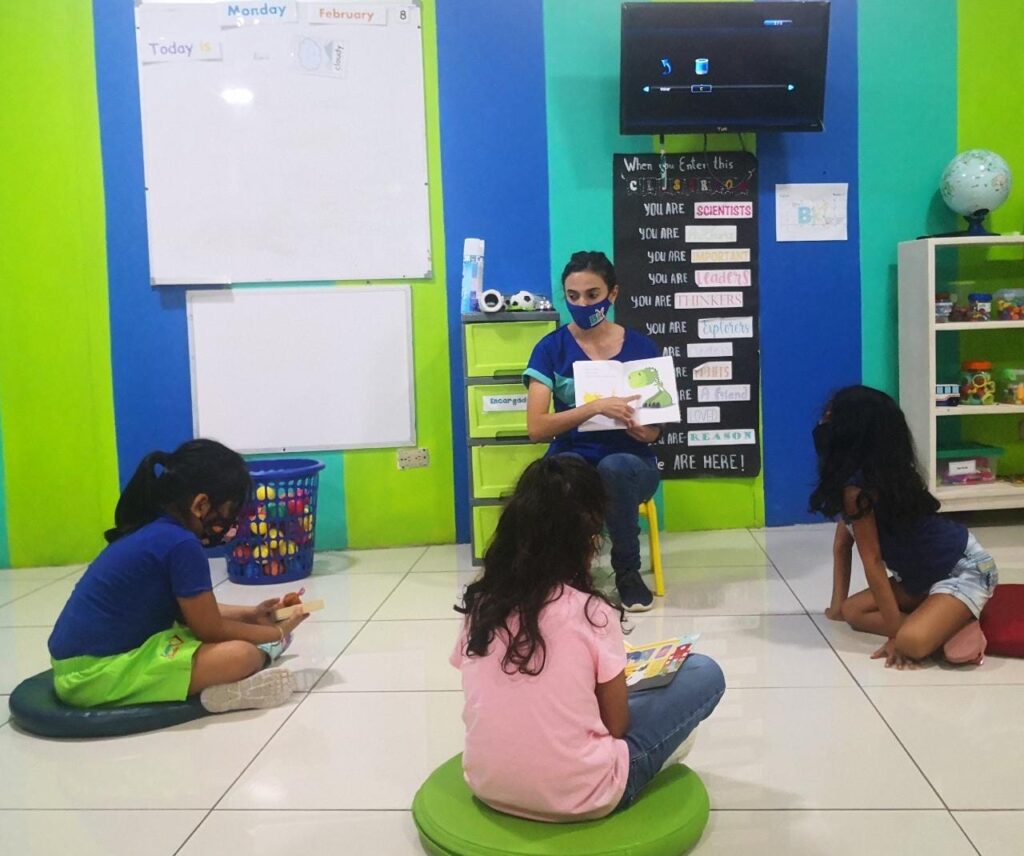There are many frustrating challenges ESL students face in the classroom, especially now that classes are being conducted online more. It’s important that teachers understand what the most common types of challenges are so they can help students overcome them and deal with the frustration that sometimes accompanies language learning. Read on to learn how to help your students cope with common ESL struggles and have a positive learning experience!
If you’re new to teaching, you’ll want to get initial training and qualification with a TEFL certificate. You can explore our online TEFL courses to get started!
How do you deal with students who are frustrated?
There are many things you can do during each lesson to promote a relaxed and productive classroom environment. Here are a few ideas to have up your sleeve that you can pull out any time you see students starting to get frustrated.
- Play music: Use music in the ESL classroom to raise energy levels or calm everyone down if they’re already hyped up. Setting the appropriate energy levels before beginning instruction is very helpful in setting the right pace and avoiding future frustration.
- Take brain breaks: Set a timer and take everyone’s minds to a simpler, happier place for a few minutes. Put on a calm song in English, let younger students color, and have older students copy down a written passage into their notebooks. Research other therapeutic exercises you can utilize in your classroom to allow students to relax and digest some of the new concepts they’ve learned.
- Play games: Turning topics that you suspect will be frustrating for students into ESL games is a great way to reduce stress and increase enthusiasm in the classroom. Stress affects our ability to learn and form new memories, so adding laughter into the classroom via gamification can set the tone for a fruitful learning experience.
- Switch tasks: Sometimes, the best thing to do is leave the topic for another day when your students will be less stressed and more receptive to learning.
How do I make ESL students more comfortable?
As a teacher, there are some things you can keep in mind when planning your lessons to ensure that students feel comfortable in class. When learners are relaxed and having fun, they’ll be less likely to get frustrated and more likely to absorb what you’re teaching them. The following simple strategies promote a classroom environment where students are comfortable expressing their thoughts and feelings, asking questions, participating in lessons, and making mistakes.
- Use ESL icebreakers to get all students speaking from day one.
- Make your lessons interactive so that no one recedes into their shell while listening to you speak. You can achieve this by reducing teacher talking time (TTT).
- Break students into groups often so they have an opportunity to get to know one another.
- Greet students as they enter the classroom, and speak more in-depth with at least one student each day.
- Play games, use videos, and choose other fun ESL activities to get students laughing.
- Ask students what they feel they need to work on and how they would like to work on it.
- Appeal to a variety of learning styles – incorporate both energetic, interactive learning for extroverts and quiet, focused time for introverts.
Connecting with students can make them feel more comfortable in class. Here’s how to build rapport with learners when teaching online.

What common things do ESL students struggle with?
Challenge #1: The plateau
In the first few months of learning a language, most students progress relatively quickly. Essential vocabulary and basic tenses can be memorized, practiced, and mastered by any student willing to put in some effort. After this initial phase of rapid learning, however, students must string their bits of knowledge together and take a big step into natural conversation. At this stage, several obstacles arise that together form the dreaded plateau in learning: lack of clear learning goals (“become conversational” is not a “SMART” goal), lack of confidence, and lack of opportunities to engage with the language one-on-one, just to name a few.
Solution
One solution that applies to the learning plateau, as it does to many other challenges in life, is to break things down and take them one step at a time. Organize your lesson objectives into specific and realistic goals. Instead of aiming towards an ill-defined idea of “fluency,” continue structuring your class around small, attainable objectives like:
- Successfully navigate between using past perfect and past perfect continuous five times in one class.
- Correctly decipher 80% of the words in a short speaking segment.
If the majority of your students cannot meet such objectives on a daily basis, consider changing your goals until the majority of your class can feel accomplished and confident that they are progressing.
Learn more about using objectives in ESL lesson planning.
Challenge #2: Lack of confidence
This is an extremely common problem ESL students face. Many students, especially those who are already shy in their native language, often lack the confidence to practice their speaking skills. Extroverted students may not appear to be self-conscious but will also suffer the debilitating effects of embarrassment and lack of confidence when it comes to learning a new language. Without the necessary confidence to take chances and make mistakes, students’ progress can be seriously limited.
Solution
One very effective way to create a safe classroom atmosphere in which students are willing to be vulnerable is for you to show them how.
Role reversal is a great way to get your students more comfortable with making mistakes as they play around with the complexities of English. Instead of constantly playing the role of instructor and arbiter of proper language usage, switch it up! Ask your students about their native language. Let them teach you how to speak properly. Not only will this imbue your students with confidence and pride in being able to share a piece of their own language and culture, but it is also a great opportunity for you to show them how to react to mistakes that inevitably arise when speaking a foreign language – just brush it off and keep trying.
Learning how to effectively correct student errors is another important aspect of building learners’ confidence in the classroom. Take a Micro-credential course in Error Correction in the EFL Classroom to master this skill.

Challenge #3: Virtual learning fatigue
Sitting in front of a computer and trying to remain focused on a lesson can be a very challenging task for young learners as well as adults! Many students need to move around to learn, and others crave direct interaction with their peers. Others struggle with attention deficiency already, and learning on the computer just aggravates this difficulty. If your lesson comes after hours of other Zoom lessons, don’t take it personally when your students feel even more distant than usual. Whether they’re browsing the internet or staring off into space, there are things you can try to bring everyone back together.
Solution
Get organized, active, and interactive. These concepts are present in any effective classroom, whether virtual or in-person. If you’re teaching online, however, it’s important to realize how much more essential these three characteristics suddenly become. Every second the class spends waiting for you to find that video you wanted to show them, you lose a student or two to the World Wide Web. Every second you force young children to squirm through yet another static activity, you lose another enthusiastic learner. You get the idea.
Here’s what you should keep in mind when teaching English online:
- Be even more organized than you would be in the physical classroom, and always have the next activity loaded and ready to go.
- Be vigilant when students begin to squirm, and stand everyone up for a few minutes of active speaking/singing/dancing exercises.
- Finally, call on students much more frequently than you would in the physical classroom, and add in plenty of interactive activities to make up for the lost personal interactions!
Here are more tips for keeping online students motivated when teaching ESL.
Challenge #4: Overscheduling
Whether you’re teaching young children or business professionals, be sensitive to the fact that your class may be activity number 15 for them that day. Many parents sign students up for an abundance of before- and after-school activities, hoping to keep them busy and help them find their passion. Other parents work late and send their children to extracurriculars, making them miss out on relaxing family time after school. Adults may be coming to class after a long day of work. If your students are overscheduled, they are likely stressed, tired, and find it difficult to focus. Here’s how you can help.
Solution
Talk to your students about their lives outside of your class. For students who are stressed or overwhelmed, the opportunity to talk about everything they’ve done and everything they still have to do can be therapeutic – sort of like making a verbal to-do list and crossing things off.
Listen empathetically and react emotionally, without attempting to give advice or criticize their time-management skills. Not only is this a great English speaking exercise, but it can also clear everyone’s minds and prepare them to focus on your lesson.
For younger learners, instead of sharing about their day, you might put together a puzzle or read a short book out loud. They will appreciate the break from overstimulation and will become much more receptive learners.

Challenge #5: Overambition
Ambitious students are every teacher’s dream. They’re attentive, enthusiastic, and make you feel like you’re making a difference. Overambition, however, can backfire and stunt the student’s progress as well as negatively affect the classroom. Overambitious students are typically motivated by parental demands or an unrealistic understanding of what it takes to learn a language. They become agitated when they don’t perform to their expectations, and they may frequently steer off-topic in an attempt to jump ahead of the class. Here’s how you can handle these situations.
Solution
It’s important that you recognize and appreciate overambitious students’ passion to succeed. After doing so, you should introduce more realistic learning expectations and explain how they will contribute to the student’s broader ambitions in regard to learning English. You can frequently reference these ambitions in your lessons so that your students understand how each topic is tied to their eventual success.
To help overambitious students who become discouraged by the pace of their progress, work with them to set smaller goals, and illustrate how each of these goals is tied to the learning objectives in your lessons. They will begin to trust the process and focus on achievable outcomes rather than jumping ahead and getting discouraged.
Take a look at 5 types of challenging online students and how to handle them.
Challenge #6: Demotivating classmates
Overly chatty students, classmates with mismatched skill levels or misaligned learning styles, learners who don’t want to participate… the list goes on. When these types of problems go unmanaged in the classroom, they can create a demotivating learning environment for eager students. Working on your classroom management skills is essential as a teacher, and there are plenty of simple strategies you can use to combat issues related to group learning.
Find out more about classroom management when teaching English online.
Solution
If your classroom environment is not engaging or motivating enough to captivate all students, it may be time to shift your focus and unite them in English by dividing them in the classroom. Instead of comparing students to one another and setting universal standards of success, break them off into small groups. Group highly-focused learners together, and give them a quiet space and a challenging task. Group the active, talkative group together, and give them a high-energy task. Group the less advanced students, and set them an achievable learning objective to motivate them to keep trying.
Now that you’re aware of some common challenges ESL learners face and have ideas for how to help students overcome them, handling students’ frustration will be much more manageable. Whether you’re teaching online or in the physical classroom, the most important thing you can do is to frequently check in with learners to see the challenges they’re currently facing and be persistent and creative in overcoming them. Good luck!









